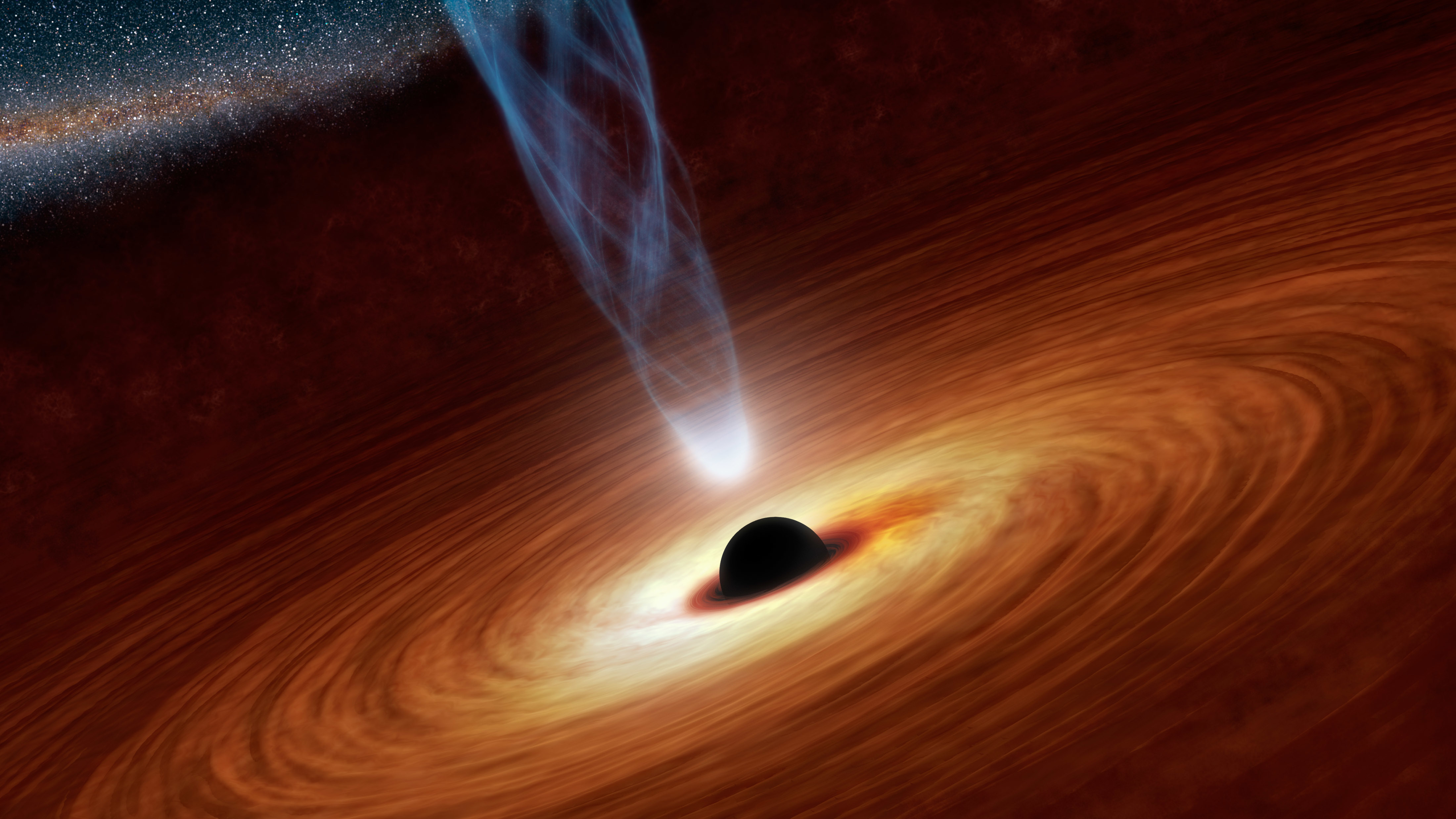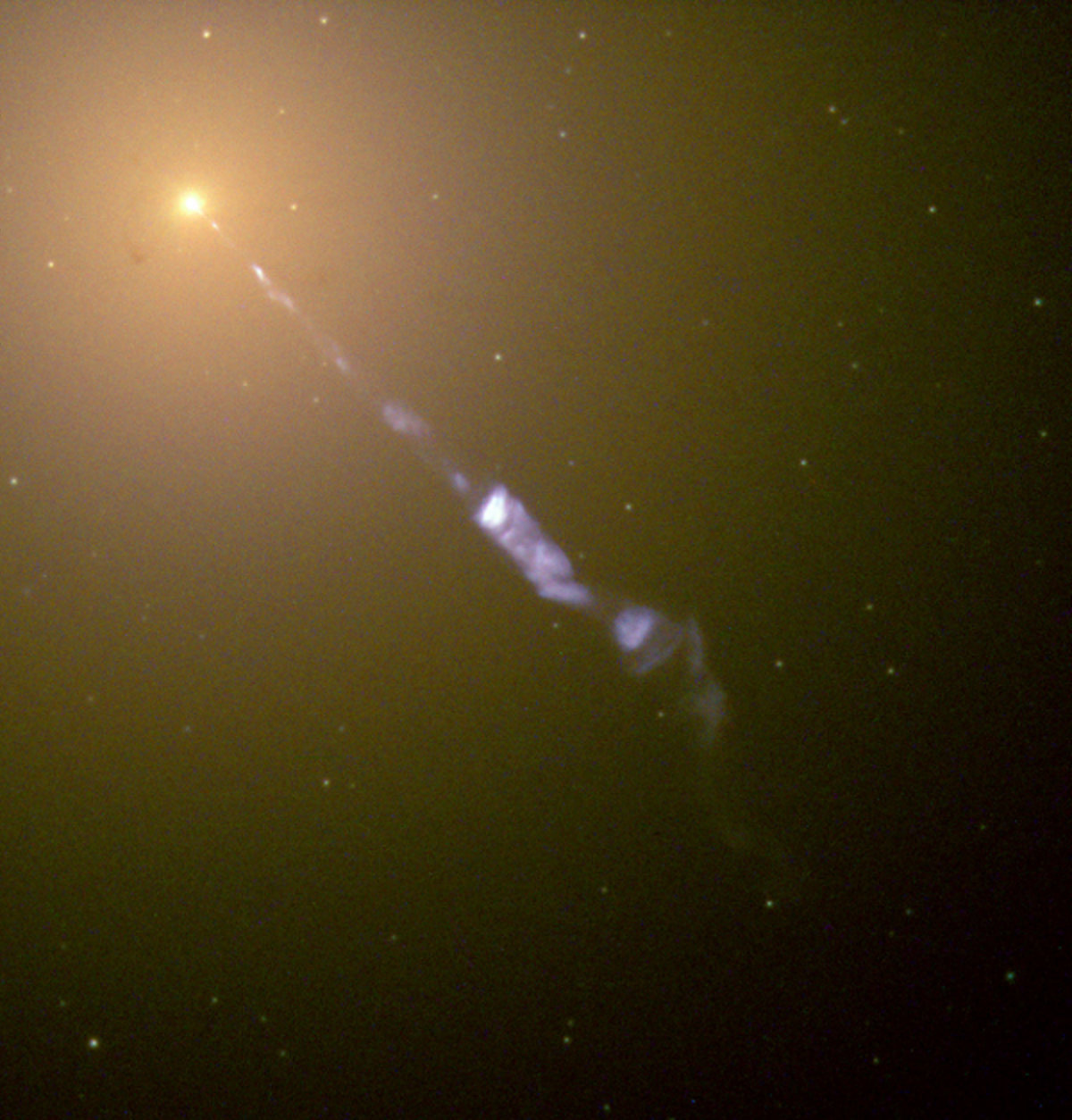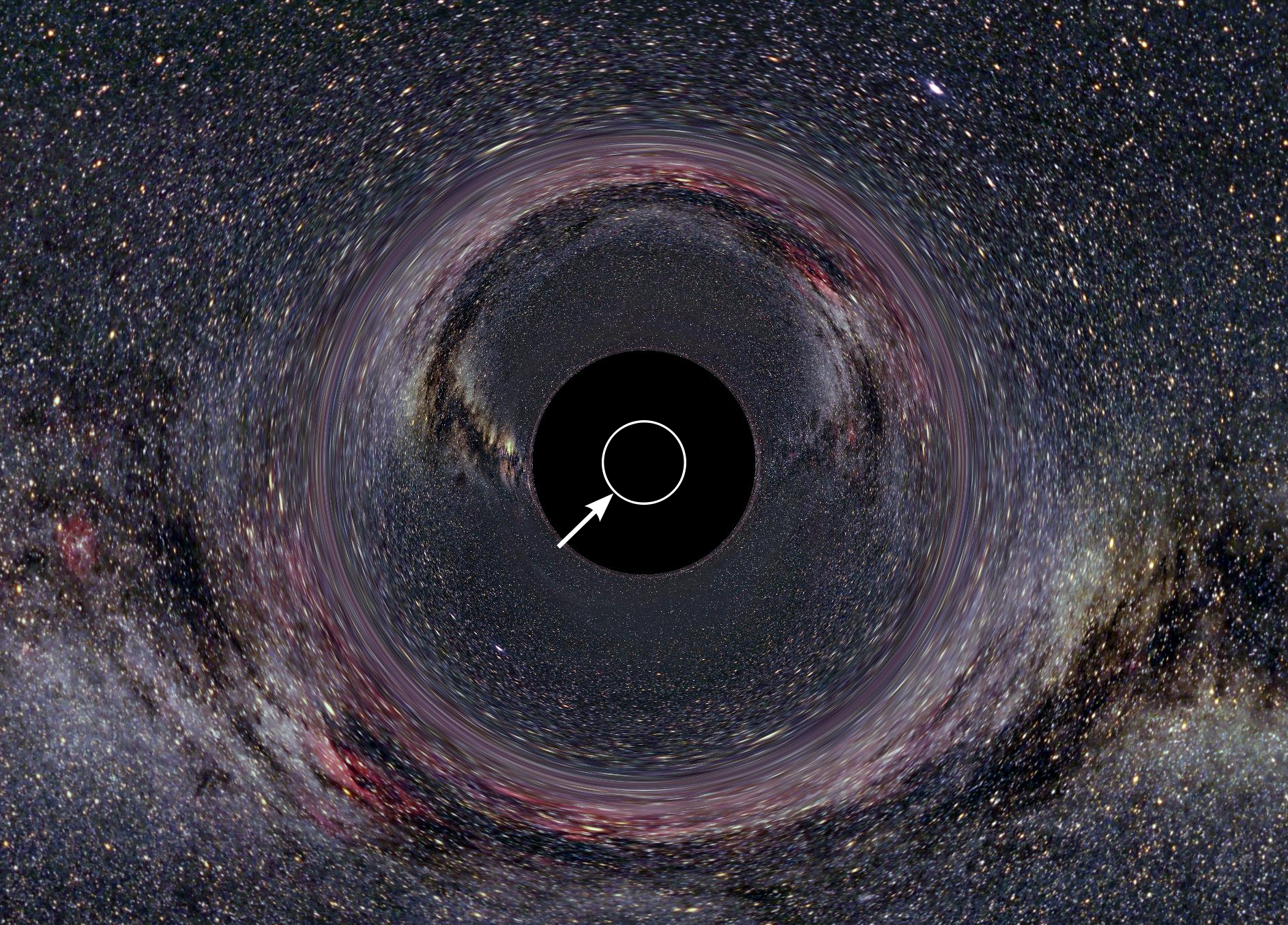Chapter 16: The Expanding Universe
Chapter 1
How Science Works
- The Scientific Method
- Evidence
- Measurements
- Units and the Metric System
- Measurement Errors
- Estimation
- Dimensions
- Mass, Length, and Time
- Observations and Uncertainty
- Precision and Significant Figures
- Errors and Statistics
- Scientific Notation
- Ways of Representing Data
- Logic
- Mathematics
- Geometry
- Algebra
- Logarithms
- Testing a Hypothesis
- Case Study of Life on Mars
- Theories
- Systems of Knowledge
- The Culture of Science
- Computer Simulations
- Modern Scientific Research
- The Scope of Astronomy
- Astronomy as a Science
- A Scale Model of Space
- A Scale Model of Time
- Questions
Chapter 2
Early Astronomy
- The Night Sky
- Motions in the Sky
- Navigation
- Constellations and Seasons
- Cause of the Seasons
- The Magnitude System
- Angular Size and Linear Size
- Phases of the Moon
- Eclipses
- Auroras
- Dividing Time
- Solar and Lunar Calendars
- History of Astronomy
- Stonehenge
- Ancient Observatories
- Counting and Measurement
- Astrology
- Greek Astronomy
- Aristotle and Geocentric Cosmology
- Aristarchus and Heliocentric Cosmology
- The Dark Ages
- Arab Astronomy
- Indian Astronomy
- Chinese Astronomy
- Mayan Astronomy
- Questions
Chapter 3
The Copernican Revolution
- Ptolemy and the Geocentric Model
- The Renaissance
- Copernicus and the Heliocentric Model
- Tycho Brahe
- Johannes Kepler
- Elliptical Orbits
- Kepler's Laws
- Galileo Galilei
- The Trial of Galileo
- Isaac Newton
- Newton's Law of Gravity
- The Plurality of Worlds
- The Birth of Modern Science
- Layout of the Solar System
- Scale of the Solar System
- The Idea of Space Exploration
- Orbits
- History of Space Exploration
- Moon Landings
- International Space Station
- Manned versus Robotic Missions
- Commercial Space Flight
- Future of Space Exploration
- Living in Space
- Moon, Mars, and Beyond
- Societies in Space
- Questions
Chapter 4
Matter and Energy in the Universe
- Matter and Energy
- Rutherford and Atomic Structure
- Early Greek Physics
- Dalton and Atoms
- The Periodic Table
- Structure of the Atom
- Energy
- Heat and Temperature
- Potential and Kinetic Energy
- Conservation of Energy
- Velocity of Gas Particles
- States of Matter
- Thermodynamics
- Entropy
- Laws of Thermodynamics
- Heat Transfer
- Thermal Radiation
- Wien's Law
- Radiation from Planets and Stars
- Internal Heat in Planets and Stars
- Periodic Processes
- Random Processes
- Questions
Chapter 5
The Earth-Moon System
- Earth and Moon
- Early Estimates of Earth's Age
- How the Earth Cooled
- Ages Using Radioactivity
- Radioactive Half-Life
- Ages of the Earth and Moon
- Geological Activity
- Internal Structure of the Earth and Moon
- Basic Rock Types
- Layers of the Earth and Moon
- Origin of Water on Earth
- The Evolving Earth
- Plate Tectonics
- Volcanoes
- Geological Processes
- Impact Craters
- The Geological Timescale
- Mass Extinctions
- Evolution and the Cosmic Environment
- Earth's Atmosphere and Oceans
- Weather Circulation
- Environmental Change on Earth
- The Earth-Moon System
- Geological History of the Moon
- Tidal Forces
- Effects of Tidal Forces
- Historical Studies of the Moon
- Lunar Surface
- Ice on the Moon
- Origin of the Moon
- Humans on the Moon
- Questions
Chapter 6
The Terrestrial Planets
- Studying Other Planets
- The Planets
- The Terrestrial Planets
- Mercury
- Mercury's Orbit
- Mercury's Surface
- Venus
- Volcanism on Venus
- Venus and the Greenhouse Effect
- Tectonics on Venus
- Exploring Venus
- Mars in Myth and Legend
- Early Studies of Mars
- Mars Close-Up
- Modern Views of Mars
- Missions to Mars
- Geology of Mars
- Water on Mars
- Polar Caps of Mars
- Climate Change on Mars
- Terraforming Mars
- Life on Mars
- The Moons of Mars
- Martian Meteorites
- Comparative Planetology
- Incidence of Craters
- Counting Craters
- Counting Statistics
- Internal Heat and Geological Activity
- Magnetic Fields of the Terrestrial Planets
- Mountains and Rifts
- Radar Studies of Planetary Surfaces
- Laser Ranging and Altimetry
- Gravity and Atmospheres
- Normal Atmospheric Composition
- The Significance of Oxygen
- Questions
Chapter 7
The Giant Planets and Their Moons
- The Gas Giant Planets
- Atmospheres of the Gas Giant Planets
- Clouds and Weather on Gas Giant Planets
- Internal Structure of the Gas Giant Planets
- Thermal Radiation from Gas Giant Planets
- Life on Gas Giant Planets?
- Why Giant Planets are Giant
- Gas Laws
- Ring Systems of the Giant Planets
- Structure Within Ring Systems
- The Origin of Ring Particles
- The Roche Limit
- Resonance and Harmonics
- Tidal Forces in the Solar System
- Moons of Gas Giant Planets
- Geology of Large Moons
- The Voyager Missions
- Jupiter
- Jupiter's Galilean Moons
- Jupiter's Ganymede
- Jupiter's Europa
- Jupiter's Callisto
- Jupiter's Io
- Volcanoes on Io
- Saturn
- Cassini Mission to Saturn
- Saturn's Titan
- Saturn's Enceladus
- Discovery of Uranus and Neptune
- Uranus
- Uranus' Miranda
- Neptune
- Neptune's Triton
- Pluto
- The Discovery of Pluto
- Pluto as a Dwarf Planet
- Dwarf Planets
- Questions
Chapter 8
Interplanetary Bodies
- Interplanetary Bodies
- Comets
- Early Observations of Comets
- Structure of the Comet Nucleus
- Comet Chemistry
- Oort Cloud and Kuiper Belt
- Kuiper Belt
- Comet Orbits
- Life Story of Comets
- The Largest Kuiper Belt Objects
- Meteors and Meteor Showers
- Gravitational Perturbations
- Asteroids
- Surveys for Earth Crossing Asteroids
- Asteroid Shapes
- Composition of Asteroids
- Introduction to Meteorites
- Origin of Meteorites
- Types of Meteorites
- The Tunguska Event
- The Threat from Space
- Probability and Impacts
- Impact on Jupiter
- Interplanetary Opportunity
- Questions
Chapter 9
Planet Formation and Exoplanets
- Formation of the Solar System
- Early History of the Solar System
- Conservation of Angular Momentum
- Angular Momentum in a Collapsing Cloud
- Helmholtz Contraction
- Safronov and Planet Formation
- Collapse of the Solar Nebula
- Why the Solar System Collapsed
- From Planetesimals to Planets
- Accretion and Solar System Bodies
- Differentiation
- Planetary Magnetic Fields
- The Origin of Satellites
- Solar System Debris and Formation
- Gradual Evolution and a Few Catastrophies
- Chaos and Determinism
- Extrasolar Planets
- Discoveries of Exoplanets
- Doppler Detection of Exoplanets
- Transit Detection of Exoplanets
- The Kepler Mission
- Direct Detection of Exoplanets
- Properties of Exoplanets
- Implications of Exoplanet Surveys
- Future Detection of Exoplanets
- Questions
Chapter 10
Detecting Radiation from Space
- Observing the Universe
- Radiation and the Universe
- The Nature of Light
- The Electromagnetic Spectrum
- Properties of Waves
- Waves and Particles
- How Radiation Travels
- Properties of Electromagnetic Radiation
- The Doppler Effect
- Invisible Radiation
- Thermal Spectra
- The Quantum Theory
- The Uncertainty Principle
- Spectral Lines
- Emission Lines and Bands
- Absorption and Emission Spectra
- Kirchoff's Laws
- Astronomical Detection of Radiation
- The Telescope
- Optical Telescopes
- Optical Detectors
- Adaptive Optics
- Image Processing
- Digital Information
- Radio Telescopes
- Telescopes in Space
- Hubble Space Telescope
- Interferometry
- Collecting Area and Resolution
- Frontier Observatories
- Questions
Chapter 11
Our Sun: The Nearest Star
- The Sun
- The Nearest Star
- Properties of the Sun
- Kelvin and the Sun's Age
- The Sun's Composition
- Energy From Atomic Nuclei
- Mass-Energy Conversion
- Examples of Mass-Energy Conversion
- Energy From Nuclear Fission
- Energy From Nuclear Fusion
- Nuclear Reactions in the Sun
- The Sun's Interior
- Energy Flow in the Sun
- Collisions and Opacity
- Solar Neutrinos
- Solar Oscillations
- The Sun's Atmosphere
- Solar Chromosphere and Corona
- Sunspots
- The Solar Cycle
- The Solar Wind
- Effects of the Sun on the Earth
- Cosmic Energy Sources
- Questions
Chapter 12
Properties of Stars
- Stars
- Star Names
- Star Properties
- The Distance to Stars
- Apparent Brightness
- Absolute Brightness
- Measuring Star Distances
- Stellar Parallax
- Spectra of Stars
- Spectral Classification
- Temperature and Spectral Class
- Stellar Composition
- Stellar Motion
- Stellar Luminosity
- The Size of Stars
- Stefan-Boltzmann Law
- Stellar Mass
- Hydrostatic Equilibrium
- Stellar Classification
- The Hertzsprung-Russell Diagram
- Volume and Brightness Selected Samples
- Stars of Different Sizes
- Understanding the Main Sequence
- Stellar Structure
- Stellar Evolution
- Questions
Chapter 13
Star Birth and Death
- Star Birth and Death
- Understanding Star Birth and Death
- Cosmic Abundance of Elements
- Star Formation
- Molecular Clouds
- Young Stars
- T Tauri Stars
- Mass Limits for Stars
- Brown Dwarfs
- Young Star Clusters
- Cauldron of the Elements
- Main Sequence Stars
- Nuclear Reactions in Main Sequence Stars
- Main Sequence Lifetimes
- Evolved Stars
- Cycles of Star Life and Death
- The Creation of Heavy Elements
- Red Giants
- Horizontal Branch and Asymptotic Giant Branch Stars
- Variable Stars
- Magnetic Stars
- Stellar Mass Loss
- White Dwarfs
- Supernovae
- Seeing the Death of a Star
- Supernova 1987A
- Neutron Stars and Pulsars
- Special Theory of Relativity
- General Theory of Relativity
- Black Holes
- Properties of Black Holes
- Questions
Chapter 14
The Milky Way
- The Distribution of Stars in Space
- Stellar Companions
- Binary Star Systems
- Binary and Multiple Stars
- Mass Transfer in Binaries
- Binaries and Stellar Mass
- Nova and Supernova
- Exotic Binary Systems
- Gamma Ray Bursts
- How Multiple Stars Form
- Environments of Stars
- The Interstellar Medium
- Effects of Interstellar Material on Starlight
- Structure of the Interstellar Medium
- Dust Extinction and Reddening
- Groups of Stars
- Open Star Clusters
- Globular Star Clusters
- Distances to Groups of Stars
- Ages of Groups of Stars
- Layout of the Milky Way
- William Herschel
- Isotropy and Anisotropy
- Mapping the Milky Way
- Questions
Chapter 15
Galaxies
- The Milky Way Galaxy
- Mapping the Galaxy Disk
- Spiral Structure in Galaxies
- Mass of the Milky Way
- Dark Matter in the Milky Way
- Galaxy Mass
- The Galactic Center
- Black Hole in the Galactic Center
- Stellar Populations
- Formation of the Milky Way
- Galaxies
- The Shapley-Curtis Debate
- Edwin Hubble
- Distances to Galaxies
- Classifying Galaxies
- Spiral Galaxies
- Elliptical Galaxies
- Lenticular Galaxies
- Dwarf and Irregular Galaxies
- Overview of Galaxy Structures
- The Local Group
- Light Travel Time
- Galaxy Size and Luminosity
- Mass to Light Ratios
- Dark Matter in Galaxies
- Gravity of Many Bodies
- Galaxy Evolution
- Galaxy Interactions
- Galaxy Formation
- Questions
Chapter 17
Cosmology
- Cosmology
- Early Cosmologies
- Relativity and Cosmology
- The Big Bang Model
- The Cosmological Principle
- Universal Expansion
- Cosmic Nucleosynthesis
- Cosmic Microwave Background Radiation
- Discovery of the Microwave Background Radiation
- Measuring Space Curvature
- Cosmic Evolution
- Evolution of Structure
- Mean Cosmic Density
- Critical Density
- Dark Matter and Dark Energy
- Age of the Universe
- Precision Cosmology
- The Future of the Contents of the Universe
- Fate of the Universe
- Alternatives to the Big Bang Model
- Space-Time
- Particles and Radiation
- The Very Early Universe
- Mass and Energy in the Early Universe
- Matter and Antimatter
- The Forces of Nature
- Fine-Tuning in Cosmology
- The Anthropic Principle in Cosmology
- String Theory and Cosmology
- The Multiverse
- The Limits of Knowledge
- Questions
Chapter 18
Life On Earth
- Nature of Life
- Chemistry of Life
- Molecules of Life
- The Origin of Life on Earth
- Origin of Complex Molecules
- Miller-Urey Experiment
- Pre-RNA World
- RNA World
- From Molecules to Cells
- Metabolism
- Anaerobes
- Extremophiles
- Thermophiles
- Psychrophiles
- Xerophiles
- Halophiles
- Barophiles
- Acidophiles
- Alkaliphiles
- Radiation Resistant Biology
- Importance of Water for Life
- Hydrothermal Systems
- Silicon Versus Carbon
- DNA and Heredity
- Life as Digital Information
- Synthetic Biology
- Life in a Computer
- Natural Selection
- Tree Of Life
- Evolution and Intelligence
- Culture and Technology
- The Gaia Hypothesis
- Life and the Cosmic Environment
Chapter 19
Life in the Universe
- Life in the Universe
- Astrobiology
- Life Beyond Earth
- Sites for Life
- Complex Molecules in Space
- Life in the Solar System
- Lowell and Canals on Mars
- Implications of Life on Mars
- Extreme Environments in the Solar System
- Rare Earth Hypothesis
- Are We Alone?
- Unidentified Flying Objects or UFOs
- The Search for Extraterrestrial Intelligence
- The Drake Equation
- The History of SETI
- Recent SETI Projects
- Recognizing a Message
- The Best Way to Communicate
- The Fermi Question
- The Anthropic Principle
- Where Are They?
Black Holes in Nearby Galaxies

All evidence points to the existence of a supermassive black hole in the center of the Milky Way Galaxy. In fact, the evidence for the black hole in our galaxy is better than the evidence for any black hole because it's based on dozens of stellar orbits and an excellent model of the central mass distribution. Based on the mediocrity principle, astronomers have assumed we should be able to find supermassive black holes in other galaxies. Astronomers have searched hard for these compact objects and in recent years, they have had great success. Careful study of the nuclei of some nearby galaxies reveals extreme concentrations of matter within the central few parsecs. What's more, the orbital velocities of these objects require a highly dense central object. There is growing evidence that supermassive black holes in nearby galaxies are relatively common, and in fact, it is believed that all but perhaps the smallest of galaxies possess central supermassive black holes.
The best evidence for large black holes uses spectroscopy to measure the mean velocities of stars near the centers of galaxies. If the motions are too rapid to be accounted for by the stellar populations known to inhabit the nuclear regions, a case can be made for a compact object like a black hole. A steadily increasing number of galaxies have been found to show sharp increases in stellar velocities near their nuclei. Stellar velocities can be used to "weigh" a galaxy within a certain radius. This method is most effective on relatively nearby galaxies where a small central region can be isolated with a spectrograph. The Hubble Space Telescope has been used for much of this research.

In our own Milky Way galaxy, it is possible to directly image the motions of stars in the innermost parts of the galaxy and measure their orbits. This work was first done by Andrea Ghez and Reinhard Genzel. This technique allows us to directly determine the mass of our galaxy's central supermassive black hole. It is estimated to be a bit more than 4 million solar masses.

Astronomers can identify galaxies for which they can combine measurements of light "cusps" or central concentrations and rapid nuclear motions. The combination provides good evidence for supermassive black holes. The velocity dispersion shows how the enclosed mass near the center of a galaxy varies with radius. An image shows how the light varies with radius. The ratio of the two quantities gives the variation in mass-to-light ratio with radius. Certain galaxies show a sharp rise in the mass-to-light ratio within the central parsec. Normal stellar populations have mass-to-light ratios of 2 to 30, so any values higher than this range must indicate a dark mass concentration. This mass is extremely compact, so it is quite different from the dark matter that is distributed over large volumes in the halos of galaxies (although there is dark matter in the centers of galaxies as well as distributed at larger scales). Astronomers have seen evidence of black holes that range in mass from a few million solar masses in our galaxy and in M 32, to a few billion solar masses in M 87, a giant elliptical galaxy in the Virgo cluster.


While we can't directly measure stellar motions in the cores of other galaxies, high-resolution imaging can still add additional evidence for the presence of central supermassive black holes. This type of imaging can be done at a level of 0.1 seconds of arc using the Hubble Space Telescope, or at a level of 0.3 to 0.4 seconds of arc using ground-based telescopes on excellent sites (and in the infrared with adaptive optics even higher resolutions can be achieved). The Local Group galaxy M 32 has a sharp spike of light within the central parsec. Alongside it is M 31, which also shows a central concentration of light. The density of stars in the center of M 32 is over 100 million times the density of stars in the Sun's neighborhood. Models of this light distribution indicate a black hole of 3 million solar masses. M 31 is believed to harbor a black hole of 10 million solar masses. However, a central light peak does not point uniquely to a black hole; it might also be evidence of a very dense star cluster.

The physics of these supermassive black holes is fundamentally no different than the physics of stellar massive black holes that are produced through the evolution of the largest stars. The radial size of a black hole is given by the Schwarzschild radius, RS = 2GM/c2 (For the Sun, the Schwarzschild radius is 3 km). Therefore a 106 solar mass black hole has a radius of 3 × 106 km and a 109 solar mass black hole has a radius of 3 × 109 km. The diameter of the more massive black hole is therefore 40 A.U. or only 0.0002 pc. Imagine the mass of a billion suns packed into a volume the size of the Solar System! We can use the small angle equation to show how difficult it would be to resolve a supermassive black hole in a nearby galaxy. The smallest angle that can be resolved by the Hubble Space Telescope is about 0.05 arc seconds. At a distance of D = 106 pc, in the Local Group, the size of the smallest feature that can be resolved is d = Da / 206,265 = 106 x 0.05 / 206,265 = 0.2 pc. At the distance of the Virgo cluster, the minimum resolvable feature is 1.5 times larger or 3 pc. Even for the nearest galaxies, with optical telescopes, we are restricted to looking on scales that are thousands of times the Schwarzschild radius. Recently, the Event Horizon Telescope has used its extraordinary angular resolution at radio wavelengths to make images of the black holes in the Milky Way's galactic center and in the center of M 87. However, it will only be able to do this for a handful of massive black holes. Our evidence for most supermassive black holes is indirect. We must infer the existence of a compact object from its effect on the stars and gas that surround it.
Just as a crime can be solved without actually having a reliable witness, the case for a black hole can be made without directly "seeing" the black hole. Putting all our lines of indirect evidence together, astronomers believe that we can say with certainty that supermassive black holes are a standard feature in all but perhaps the smallest galaxies. A survey by John Kormendy and others in Hawaii and Texas found evidence for black holes in about 25% of nearby galaxies. It also appears that the mass of a supermassive black hole depends on the mass of the spherical component of a galaxy. In spiral galaxies, the bulge mass dictates the mass of the black hole. In elliptical galaxies, the entire stellar mass dictates the mass of the black hole. For galaxies of all types, the black hole is massive but still only a small fraction of the overall mass of the galaxy, only 0.1%. Dark forces are at work in the hearts of most galaxies.

It seems extraordinary to hypothesize supermassive black holes when the evidence for stellar-mass black holes is strong but not overwhelming. Yet the state of matter in such a compact object is not that unusual. Let us start with a black hole the mass of the Sun. If 2 × 1030 kg is squashed into a region 3 km in radius, the density is a phenomenal 1019km/m3. Density is proportional to mass over radius cubed, r ∝ M/R3, and we have seen that the Schwarzschild radius is proportional to mass. Combining these relationships gives the result that the density of a black hole is inversely proportional to the square of the mass, r ∝ M-2. In other words, supermassive black holes are far less dense than puny stellar mass black holes. This means that if a one solar mass black hole has a density of 1019 kg/m3, then a million solar mass black hole has a density of 1019/(106)2 = 107 kg/m3, and a billion solar mass black hole has a density of 1019/(109)2 = 10 kg/m3. This last number is only ten times the density of the air you are breathing! Supermassive black holes are a hundred times less dense than water! Admittedly, this assumes that the mass is evenly distributed within the Schwarzschild radius and we have no reason to believe this is true. Nonetheless, the properties of black holes are counter-intuitive and fascinating to think about.

